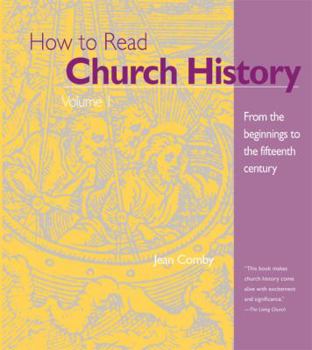How to Read Church History Volume 1: From the Beginnings to the Fifteenth Century Volume 1
Select Format
Select Condition 
Book Overview
This book does not separate church history from the wider history of the world in which it is set, uses all available traces of the past to tell it's story, provides direct quotations from the written... This description may be from another edition of this product.
Format:Paperback
Language:English
ISBN:0824507223
ISBN13:9780824507220
Release Date:October 1985
Publisher:Crossroad Publishing
Length:202 Pages
Weight:1.00 lbs.
Dimensions:0.5" x 8.0" x 8.8"
Customer Reviews
1 rating
A long time ago...
Published by Thriftbooks.com User , 21 years ago
Jean Comby's text, 'How to Read Church History: Volume 1', covers the period from the beginnings of the church to the time of the beginnings of the Reformation in the fifteenth century. It is part of a series by the Crossroad Press on how to read or study different aspects of church history, practice, and belief. Divided into ten chapters, it examines the early, pre-institutional church, the church fathers, the consolidation of the institutional church, the medieval period, the East/West split, and the overarching society known as Christendom. This text was originally published in French, translated a few years later for the benefit of English-reading audiences. For a book that was prepared before the wide-spread influence of the internet, it bears a remarkable similarity to modern web pages in its format and design. There are boxes, highlighted areas, pull-quotes, sidebars and other features throughout -- this is no simple, boring narrative. There are charts (chronologies, canons, etc.), maps, timelines, definitions, line-art drawings, and more. Church history is a history of people in the world. Thus, a good deal of space is devoted to explaining the world in which Christianity existed. The religion shaped the culture, and vice versa. Church history exists largely in the documentary evidence and the physical evidence from the past, so language, art, architecture, archaeology, religious and historical writings are all important. No one anthology or narrative history will be able to incorporate the fullness of Christian history (as the author admits), nor do most people (even scholars) have the time and resources needed to investigate all possible sources of information. Chapters do have recommended reading lists on each topic.Each of the ten chapters is brief, supplemented with maps, charts, boxes, and more. The narrative history could be read in but a few sittings (perhaps, for the quick reader, even in one sitting). This can then be fleshed out by including the complementary information upon second reading. Like much of history, some memorisation of dates, persons, places, movements, etc. would be helpful -- the style of this text makes that much more easy to do. There is a great deal of diversity within the history of the church, with lots of strands that can easily become confusing. The format of this book lays out the different lines in an organised way, showing the divergences and the inter-relationships well.This is a book of context and background. It does not take the place of doing reading in the primary texts. One will never get the true sense from Augustine's 'Confessions' by reading the summary here. However, one will get a greater appreciation for the larger Christian and Roman context into which Augustine was born and from which Augustine was writing. To this end, Comby gives suggestions on how to read the ancient texts, reminding the reader here that the worldview was quite different, and the presumed mess





